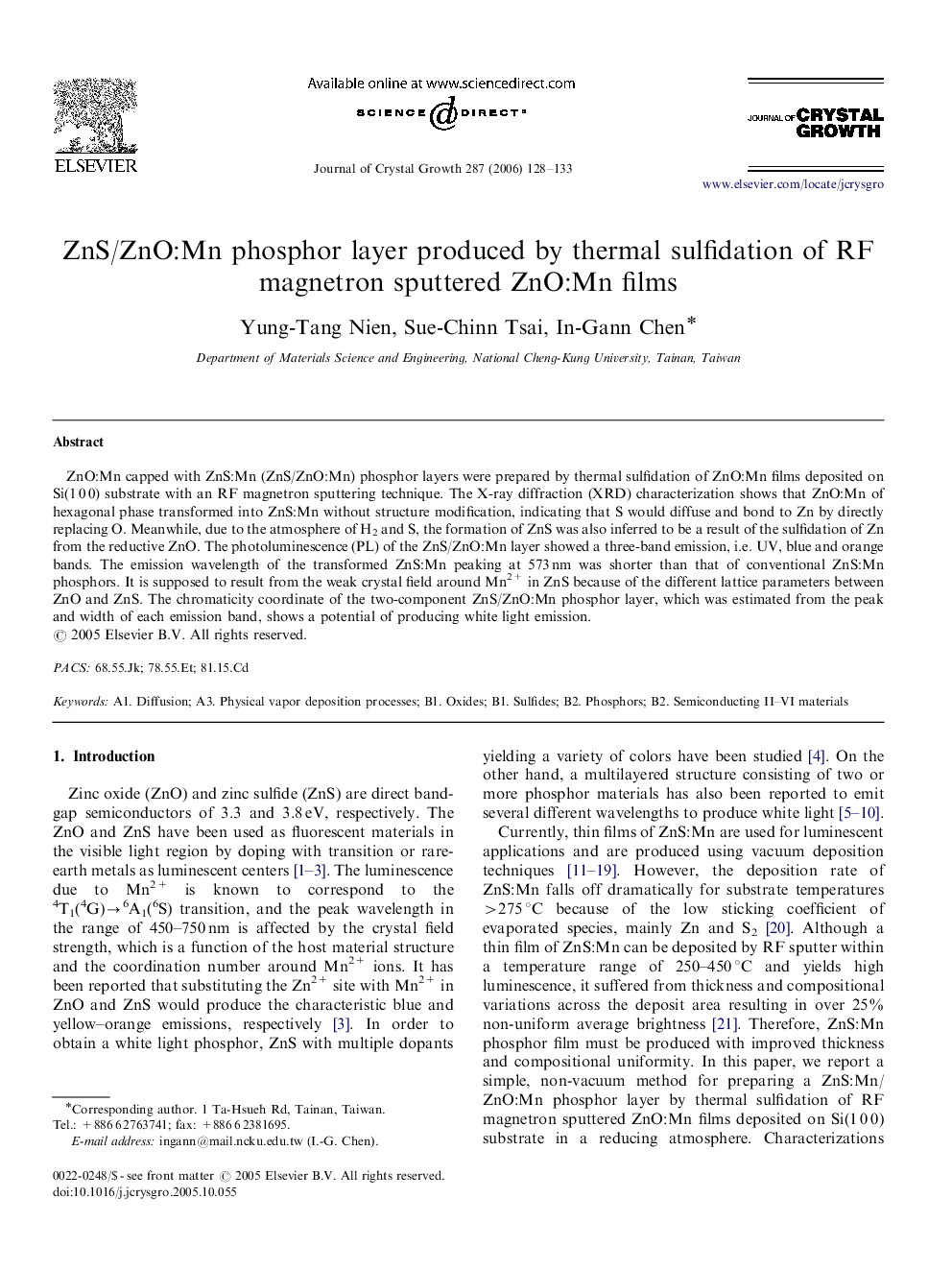| Article ID | Journal | Published Year | Pages | File Type |
|---|---|---|---|---|
| 1796844 | Journal of Crystal Growth | 2006 | 6 Pages |
ZnO:Mn capped with ZnS:Mn (ZnS/ZnO:Mn) phosphor layers were prepared by thermal sulfidation of ZnO:Mn films deposited on Si(1 0 0) substrate with an RF magnetron sputtering technique. The X-ray diffraction (XRD) characterization shows that ZnO:Mn of hexagonal phase transformed into ZnS:Mn without structure modification, indicating that S would diffuse and bond to Zn by directly replacing O. Meanwhile, due to the atmosphere of H2 and S, the formation of ZnS was also inferred to be a result of the sulfidation of Zn from the reductive ZnO. The photoluminescence (PL) of the ZnS/ZnO:Mn layer showed a three-band emission, i.e. UV, blue and orange bands. The emission wavelength of the transformed ZnS:Mn peaking at 573 nm was shorter than that of conventional ZnS:Mn phosphors. It is supposed to result from the weak crystal field around Mn2+ in ZnS because of the different lattice parameters between ZnO and ZnS. The chromaticity coordinate of the two-component ZnS/ZnO:Mn phosphor layer, which was estimated from the peak and width of each emission band, shows a potential of producing white light emission.
